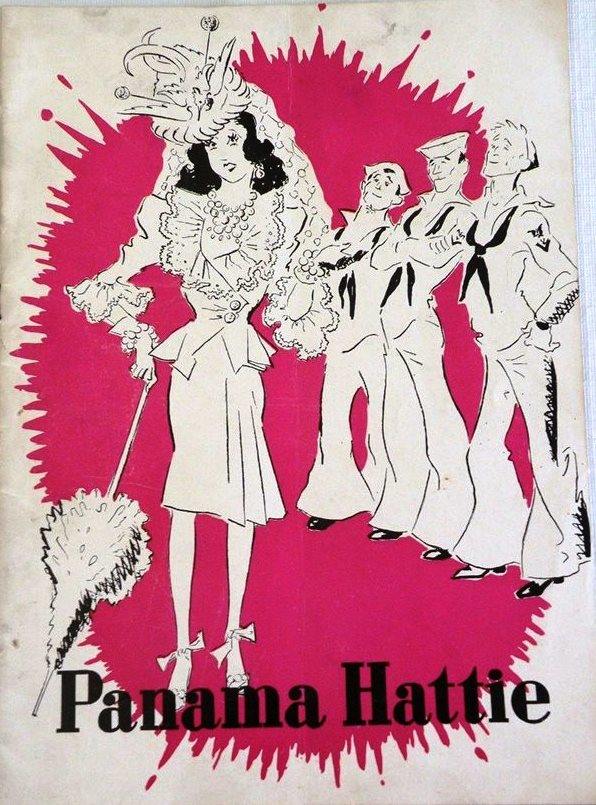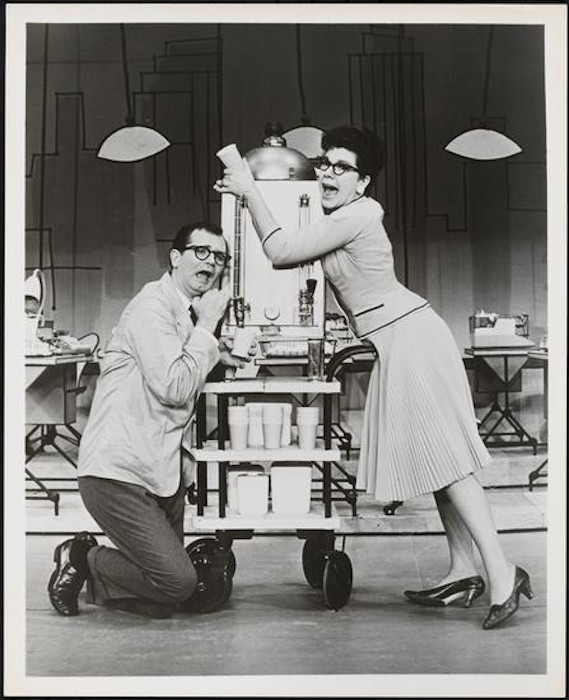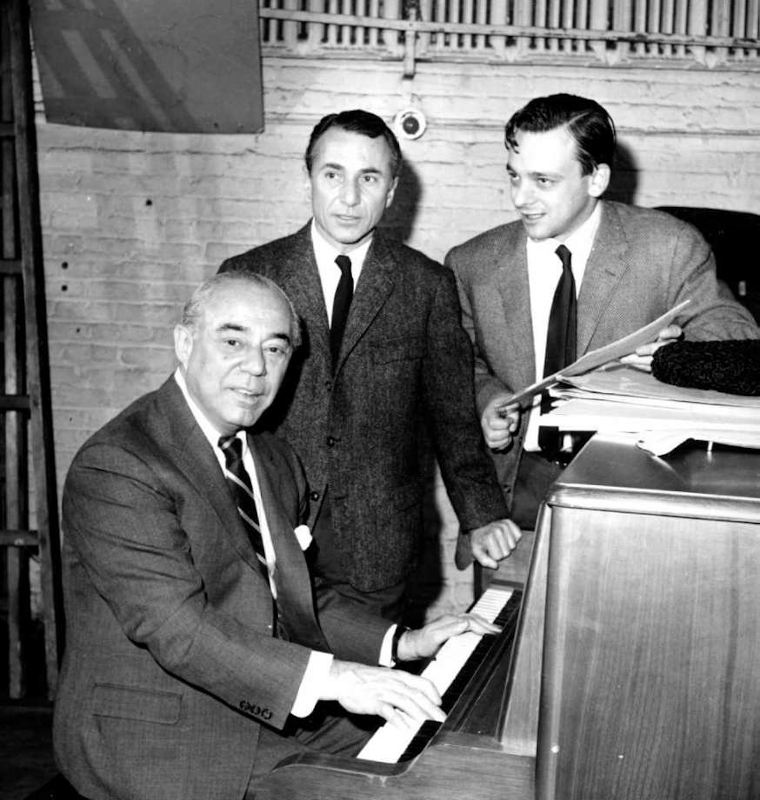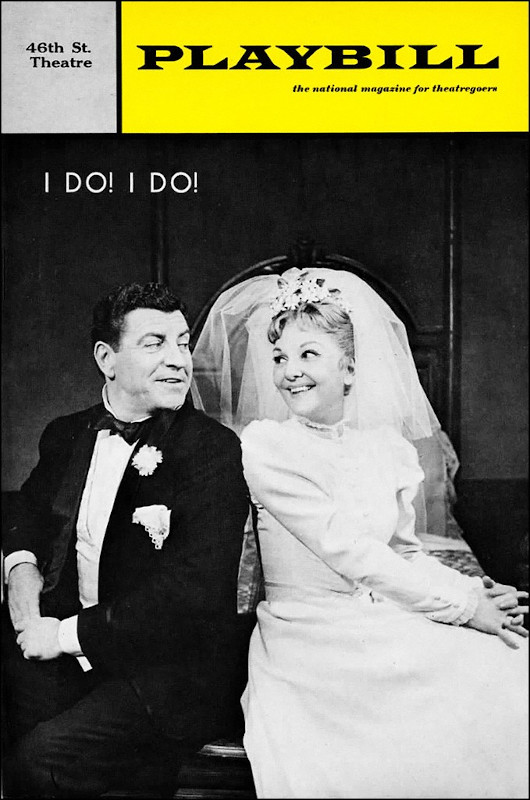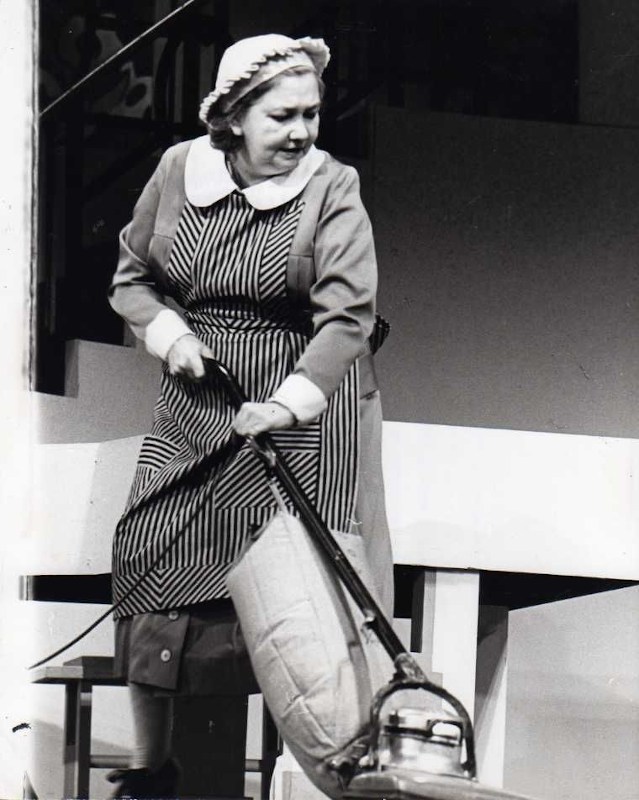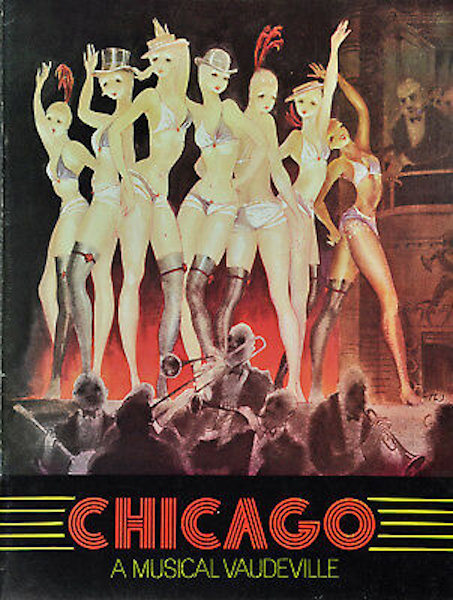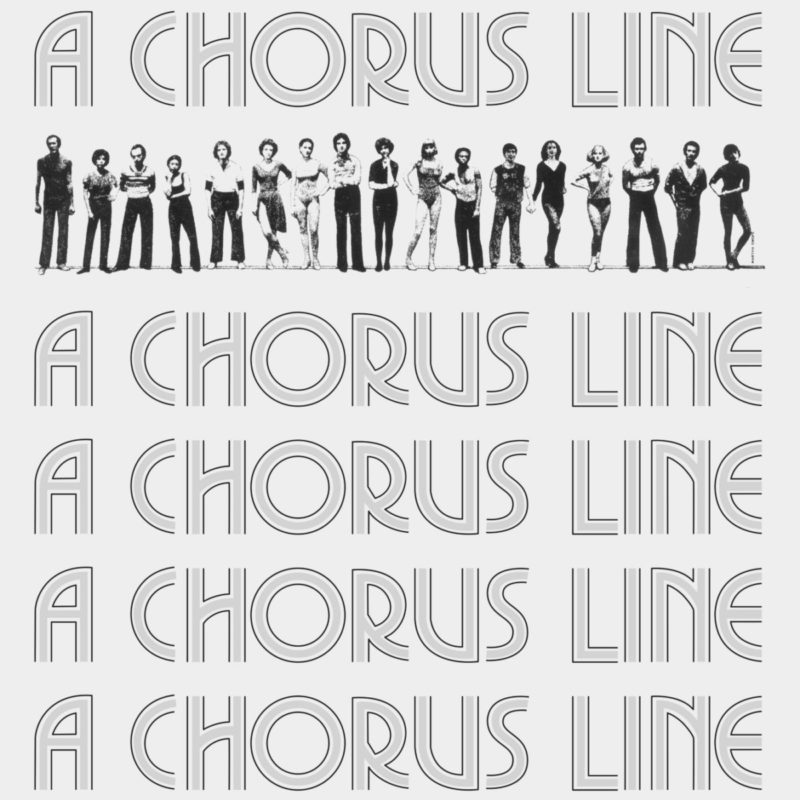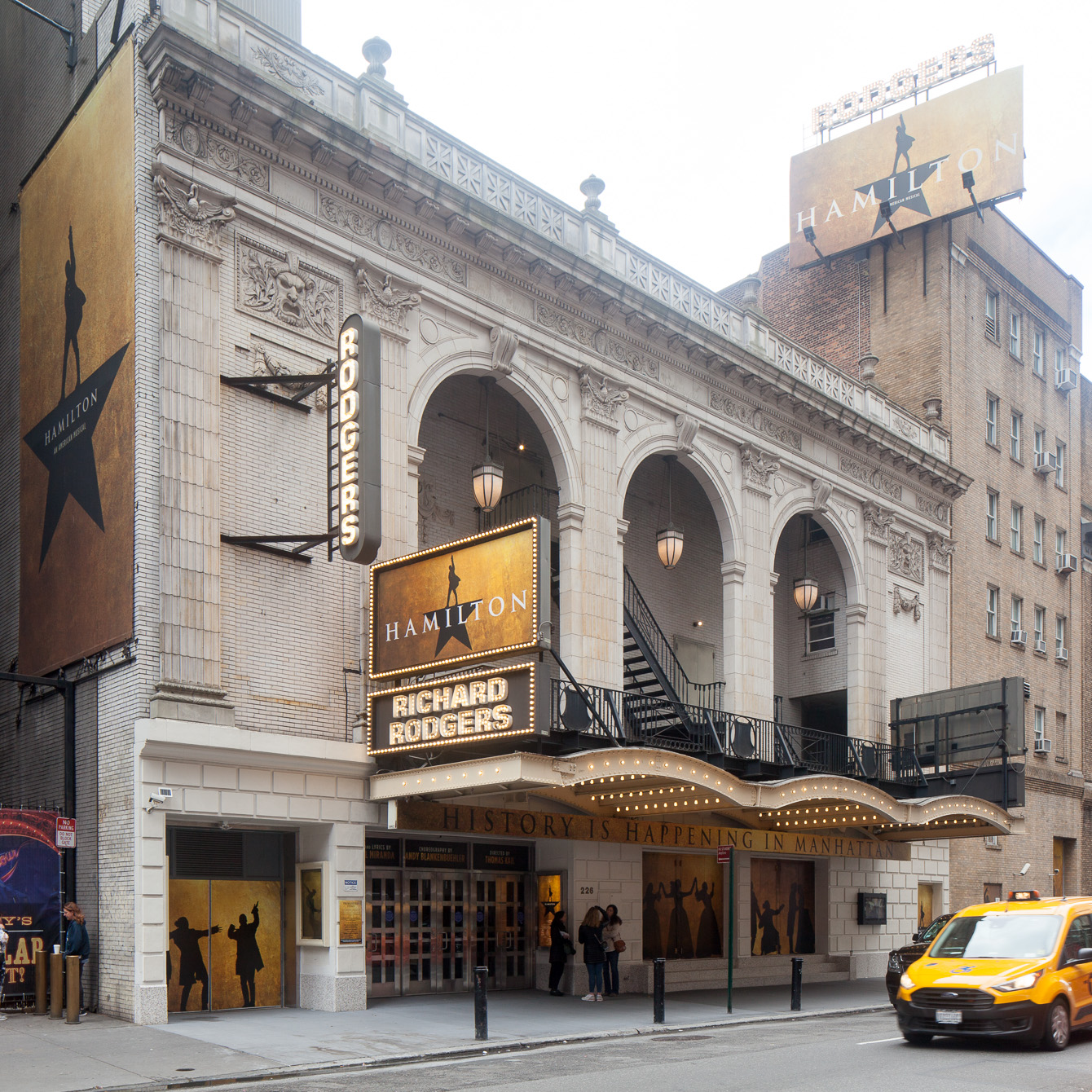
Richard Rodgers Theater (originally Chanin’s 46th Street Theater)
overview
Opened as the Chanin’s 46th Street Theater in 1924 and renamed the 46th Street Theater in 1932 and the Richard Rodgers Theater in 1990, this venue has staged multiple productions involving major LGBT performers and creators, including Charles Nelson Reilly, Fred Ebb, Cole Porter, Mary Martin, Patsy Kelly, Marc Blitzstein, Irene Sharaff, Joel Grey, and Nathan Lane, among others.
Chicago (1975-77) was a hit here; its Tony Award-winning revival ran here from 1997 to 2003 and included the LGBT contributions of Fred Ebb, John Kander, John Lee Beatty, William Ivey Long, and Joel Grey.
History
46th Street Theater
Originally called Chanin’s 46th Street Theater when it opened in 1924, the venue became the 46th Street Theater in 1932. Multiple big theater hits with LGBT associations at the 46th Street Theater were:
- Panama Hattie (1940-42), with lyrics and music by Cole Porter, and scenic and costume design by Raoul Pene Du Bois
- Sons o’ Fun (1943), with scenic and costume design by Raoul Pene du Bois (opened at the Winter Garden Theater)
- Rosalinda (1943-44), with scenic design by Oliver Smith (opened at the 44th Street Theater)
- One Touch of Venus (1944-45), with costume design by Kermit Love and Paul Du Pont, with actor Mary Martin (opened at the Imperial Theater)
- How to Succeed in Business Without Really Trying (1961-65), with actor Charles Nelson Reilly (Best Featured Actor in a Musical Tony Award)
- I Do! I Do! (1966-68), with scenic design by Oliver Smith, and costume design by Freddy Wittop, and with actor Mary Martin
- No, No, Nanette (1971-73), with production design by Raoul Pene du Bois (Best Costume Design Tony Award), with Patsy Kelly (Best Featured Actress in a Musical Tony Award)
- Raisin (1973-74), a musical based on the play A Raisin in the Sun by Lorraine Hansberry (Best Musical Tony Award)
- Chicago (1975-77) by Fred Ebb and Bob Fosse, with music and lyrics by John Kander and Ebb, and with actor Mary McCarty
- The Best Little Whorehouse in Texas (1978-82), choreographed by Tommy Tune and Thommie Walsh
- Nine (1982-84), directed by Tommy Tune (Best Direction of a Musical Tony Award), with dances by Thommie Walsh, and costume design by William Ivey Long (Best Costume Design Tony Award)
Productions by LGBT creators and with LGBT performers at the 46th Street Theater included:
- The Shanghai Gesture (1926), by John Colton (opened at the Martin Beck Theater)
- Top Speed (1929-30), with dancer Hermes Pan
- Earl Carroll’s Sketchbook (1930; opened at Earl Carroll Theater), with actor Patsy Kelly
- Anything Goes (1935; opened at the Alvin Theater), with music and lyrics by Cole Porter
- Behind Red Lights (1937), with actor Georgette Harvey
- Du Barry Was a Lady (1939-40), with music and lyrics by Cole Porter, and scenic and costume design by Raoul Pene Du Bois, and with actor Charles Walters
- Beat the Band (1942), with costume design by Freddy Wittop
- Dark of the Moon (1945), with actor Gar Moore
- Regina (1949), written and composed by Marc Blitzstein
- Ondine (1954), directed by Alfred Lunt (Best Director Tony Award), with music by Virgil Thomson
- On Your Toes (revival, 1954) by Richard Rodgers, Lorenz Hart and George Abbott, and with lyrics by Hart, scenic design by Oliver Smith, and costume design by Irene Sharaff
- New Girl in Town (1957-58), with production design by Rouben Ter-Arutunian, and with actor Thelma Ritter (Best Actress in a Musical Tony Award)
- Edwin Booth (1958), with costume design by Edith Head
- Ages of Man (1958-59), with actor John Gielgud
- Redhead (1959-60), with production design by Rouben Ter-Arutunian (Best Costume Design Tony Award)
- Tenderloin (1960-61), choreographed by Joe Layton, and with scenic and costume design by Cecil Beaton, and with actor Maurice Evans and dancer Wakefield Poole
- Donnybrook! (1961), directed and choreographed by Jack Cole, and with scenic and costume design by Rouben Ter-Arutunian
- Do I Hear a Waltz? (1965) by Arthur Laurents, directed by John Dexter, with lyrics by Stephen Sondheim, and scenic and costume design by Beni Montresor
- The Women (revival, 1973), with scenic design by Oliver Smith
- Private Lives (revival, 1975) by Noel Coward
- Checkmates (1988), with actor Paul Winfield
Richard Rodgers Theater
In 1990, the venue was renamed the Richard Rodgers Theater. An enormous hit was the revival of Chicago (1997-2003 – Best Revival of a Musical Tony Award) by Fred Ebb and Bob Fosse, with music and lyrics by John Kander and Ebb, scenic design by John Lee Beatty, and costume design by William Ivey Long, with actor Joel Grey.
Other shows at the Richard Rodgers with LGBT associations were:
- Laughter on the 23rd Floor (1993-94), with costume design by William Ivey Long, and lighting design by Tharon Musser, and with actor Nathan Lane
- Steel Pier (1997), with music and lyrics by John Kander and Fred Ebb, and costume design by William Ivey Long
- Side Show (1997-98), with music by Henry Krieger, and costume design by Gregg Barnes
- Footloose (1998-2000), a big hit, with scenic design by John Lee Beatty
- Seussical (2000-2001), by Stephen Flaherty and Lynn Ahrens, with music by Flaherty and costume design by William Ivey Long, directed by Frank Galarti, and with actor Andrew Keenan-Bolger
Entry by Jay Shockley, project director (June 2019, with multiple additions).
NOTE: Names above in bold indicate LGBT people.
Building Information
- Architect or Builder: Herbert J. Krapp
- Year Built: 1924
Sources
“The 1st List of: Gay/Lesbian/Bi Industry People, Both in Front and Behind the Camera,” www.imdb.com, May 31, 2013.
Adam Hetrick, “The Work of Broadway’s Gay and Lesbian Artistic Community Goes on Display Nov. 14 When the Leslie/Lohman Gay Art Foundation Gallery Presents ‘StageStruck: The Magic of Theatre Design’,” Playbill, November 14, 2007.
Forty-Sixth Street Theater Designation Report (New York: Landmarks Preservation Commission, 1987).
Internet Broadway Database.
Do you have more information about this site?
This project is enriched by your participation! Do you have your own images of this site? Or a story to share? Would you like to suggest a different historic site?
